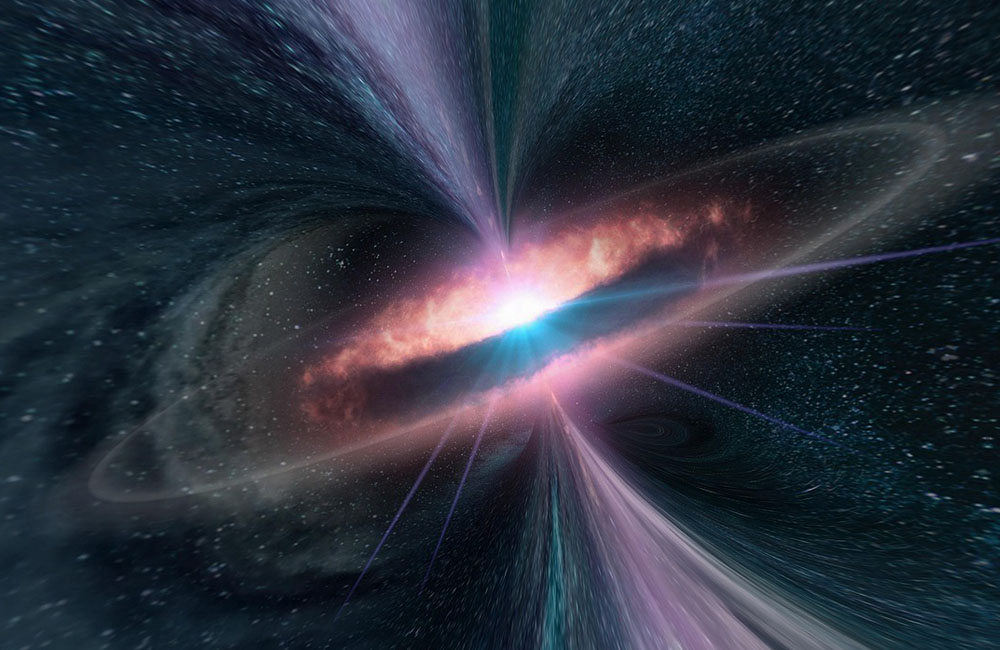The black hole information loss paradox is a fundamental problem in theoretical physics that arises from the apparent contradiction between general relativity and quantum mechanics regarding what happens to information that falls into a black hole.
1. The Problem: Hawking Radiation and Information Loss
In 1974, Stephen Hawking showed that black holes are not completely black but emit radiation due to quantum effects at the event horizon. This radiation is known as Hawking radiation, and it causes black holes to lose mass and eventually evaporate completely.
Why is this a problem?
- Hawking radiation is thermal (random): It does not carry any information about the matter that fell into the black hole.
- If a black hole evaporates completely, then all the information about the original matter is seemingly lost.
- This contradicts quantum mechanics, which states that information must be preserved (unitarity of quantum mechanics).
This leads to a paradox: Does information truly disappear in black holes, or is it somehow recoverable?
2. Possible Resolutions to the Paradox
Several theories have been proposed to resolve the black hole information loss paradox:
(A) Information is Preserved (No Loss)
-
Black Hole Complementarity (Holography)
- Proposed by Leonard Susskind and Gerard ‘t Hooft.
- Suggests that information is stored at the event horizon and is not lost.
- This aligns with the holographic principle, where the information inside the black hole is encoded on its surface.
-
Firewalls
- Some theories propose that a high-energy firewall exists at the event horizon, destroying infalling matter and emitting information.
- This, however, contradicts Einstein’s Equivalence Principle, which states that nothing unusual should happen at the event horizon.
-
Hawking’s Final Proposal (Soft Hair)
- In 2016, Hawking suggested that “soft hair” (low-energy quantum excitations) on the event horizon could store information.
- This means information may be encoded in the subtle quantum states of the event horizon.
-
Quantum Gravity and Holography
- Some researchers believe that a complete theory of quantum gravity (like String Theory or Loop Quantum Gravity) will resolve the paradox.
- The AdS/CFT correspondence (a holographic duality in String Theory) suggests that information about the interior of the black hole is encoded in a lower-dimensional boundary.
(B) Information is Lost (Breaks Unitarity)
-
Irreversible Information Loss
- Some interpretations suggest that black holes truly destroy information, leading to a modification of quantum mechanics.
- This would imply that nature is fundamentally non-unitary, but there is no experimental evidence for such a change.
-
Remnants or Wormholes
- Some theories propose that black holes leave behind Planck-scale remnants or connect to other universes via wormholes where information is preserved.
- However, remnants pose problems with infinite degeneracy (too many possible final states).
3. Recent Developments
(A) The “Page Curve” and Quantum Entanglement
- In 2019, calculations using quantum entanglement suggested that information does leak out through Hawking radiation over time.
- This produces a “Page Curve,” which matches what is expected in a unitary quantum system.
- These ideas suggest that black holes do not completely destroy information, and that Hawking radiation eventually encodes all lost information.
(B) Wormholes and Quantum Computing
- Some research indicates that quantum wormholes (ER=EPR conjecture) could allow information to escape.
- Quantum computing principles (like entanglement) may explain how information is preserved across event horizons.
4. Conclusion
The black hole information paradox remains an active area of research. While we do not have a definitive answer yet, new theoretical approaches, including quantum information theory and holography, suggest that information is likely preserved, not lost. Future discoveries in quantum gravity, black hole physics, and experiments with gravitational waves might finally resolve this paradox.







